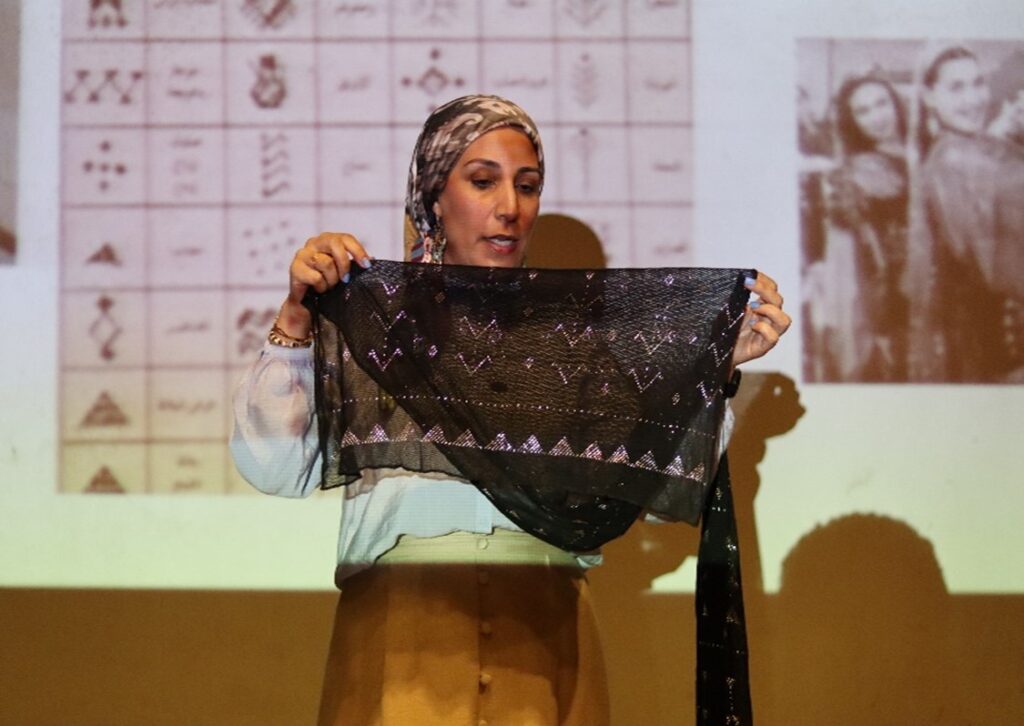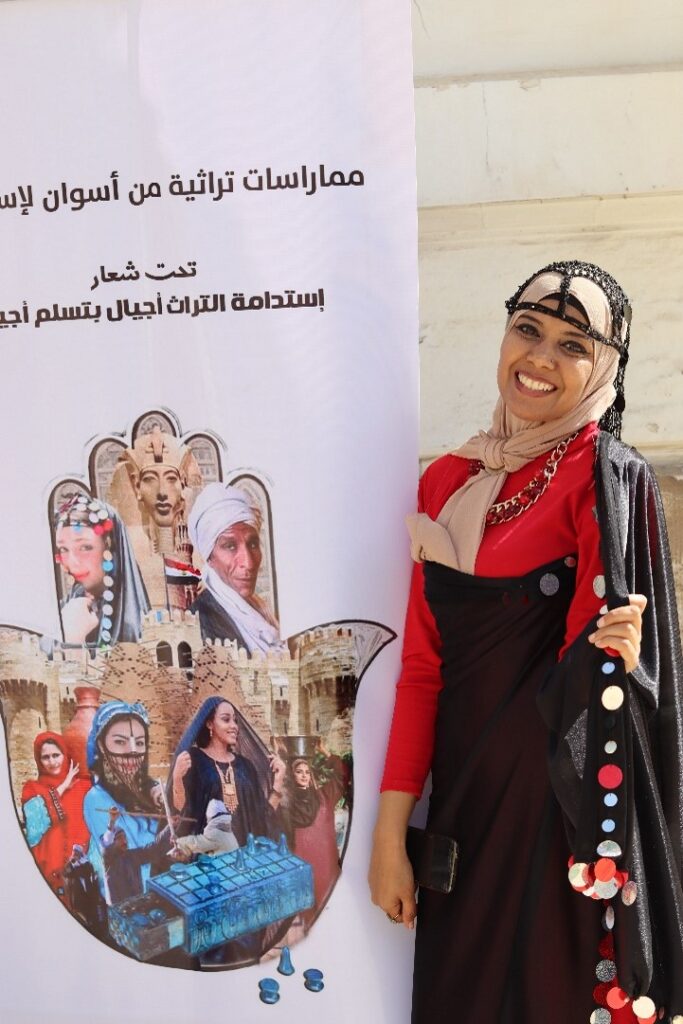‘Heritage Practices from Aswan to Alexandria’ – in celebration of World Heritage Day
Written by Dina Gohar, Curator, Alexandria National Museum (Egypt, ITP 2023)
Within the framework of celebrating World Heritage Day, I had the honor as a curator working at the Alexandria National Museum to organize an activity about heritage titled Heritage Practices from Aswan to Alexandria. The aim was to shed light on tangible and intangible heritage and cultural practices in several Egyptian governorates, spanning from Aswan in the south to Alexandria in the north. The event served as an opportunity to foster cooperation among some of my Egyptian ITP fellows, to provide lectures and engage in discussions with the audience about heritage value and role of museums in heritage preservation and interpretation.

It was a pleasure to meet with three other ITP fellows who also gave presentations throughout the day:
Dr. Ahmed Hamida, ITP 2016, as the Head of Central Administration of Egyptian Regional Museums, delivered a speech on the significance of museums in preserving tangible and intangible heritage. He emphasized the role of museums in educating society about the importance of heritage and its preservation.
Dr. Nagwa Bakr, ITP 2019, Training Department Director at National Museum of Egyptian Civilization, participated in a lecture titled Assiut Governate: Between the Past and the Present, during which she discussed her native governorate, Assiut, located in Upper Egypt. She elaborated on the heritage sites within Assiut, its customs, particularly those related to weddings and funerals, women’s clothing, the Assiut Tulle Fabric. Furthermore, she delved into the existence of traditional clothing and games in Assiut, noting that these games were a continuation of those depicted in ancient Egyptian tombs. Nagwa greatly contributed to the event, assisting with tasks such as selecting the title of the event and coordinating the schedule. She is a wonderful and supportive friend.


Dr. Omnia Zaghloul, ITP 2022, a curator at Alexandria National Museum, participated in a lecture titled Minya Governorate, Bride of the Nile between Authenticity and Heritage, during which she discussed the origin of Minya Governorate and its most significant heritage sites. Additionally, she elaborated on the enduring heritage practices in Minya, including traditional foods and clothing, religious and social celebrations such as weddings and welcoming newborns, as well as customs related to death.
The celebration featured many different activities and was very popular with visitors to the museum, including families and youth. The event commenced with a series of lectures about the various cities of Egypt. Throughout these lectures, engaging discussions ensued between the audience and the speakers, reminiscing about memories from different places, childhood celebrations, and exploring their roots and origins.
My colleague and friend, Zainab Muhammad, a curator at the Alexandria National Museum, delivered a lecture on the heritage of Alexandria. In it, she discussed the ancient streets of Alexandria and its means of transportation, notably highlighting the Yellow Tram, renowned in the city’s history. This traditional mode of transportation remains a favorite among visitors and locals alike. Additionally, I delved into Alexandria’s diverse heritage, touching upon its traditional clothing and famous dishes.

Subsequently, my colleague Nadia Fawzi who is responsible for the restoration of organic antiquities at the Egyptian Capitals Museum elaborated on the Sohag Governorate, specifically focusing on the Sohag Tulle fabric. She detailed the methods of making it, the tools involved, the engraved shapes, and their symbolism, providing a lecture filled with valuable information.
My friend Esraa Mustafa, Ambassador for Sustainable Development, gave a lecture, Aswan, Magic of the South, in which she talked about Aswan’s material and intangible heritage, the influence of heritage on nature, and the reasons for the continuation of heritage practices such as food, clothing, language, and wedding customs until now in Aswan and Nubia.

Following the lectures and discussions, the event transitioned to the museum garden, where traditional foods and drinks unique to various cities were presented to the museum visitors and attendees. Guests also had the opportunity to take photos with children dressed in the traditional attire of different Egyptian cities, accompanied by the melodies of old traditional songs.


In the museum’s garden, competitions were held for an ancient Egyptian heritage game known as the SENET game, once played by ancient Egyptian kings. As a side note, I previously wrote my first blog with ITP about the SENET game, a piece of which is on display in the Egypt and Sudan section of the British Museum.
My friend, Rania Salah, organizes the SENET game at her institution for traditional crafts, complete with set rules. SENET is a group game where two players compete until one emerges victorious. During gameplay, we engage with participating children and young people, discussing Egyptian heritage and the significance of its preservation and revitalization. They express great admiration for the game, and by day’s end, visitors enthusiastically echo their sentiments. Attendees convey their joy with the event and their commitment to heritage, advocating for its continuation. They request more such events to educate new generations about Egypt’s heritage and foster an interest in preserving their unique identity.


The event aims to acquaint today’s generation with heritage practices passed down by their predecessors and ensure their continued relevance.
The other goal is to achieve a set of sustainable development goals and raise community awareness about them through the museum, which are:
1- No Poverty: Ensure sustainable jobs by reviving heritage crafts.
4- Quality Education: Provide cultural education for all societal segments.
8- Decent Work & Economic Growth: Revive endangered crafts for economic sustainability.
17- Partnerships for Goals: Engage governmental, civil society, and private sectors for economic and social sustainability.
I would like to extend my gratitude to the ITP team, especially Claire, for inspiring and supporting innovative ideas implemented at the museum.

